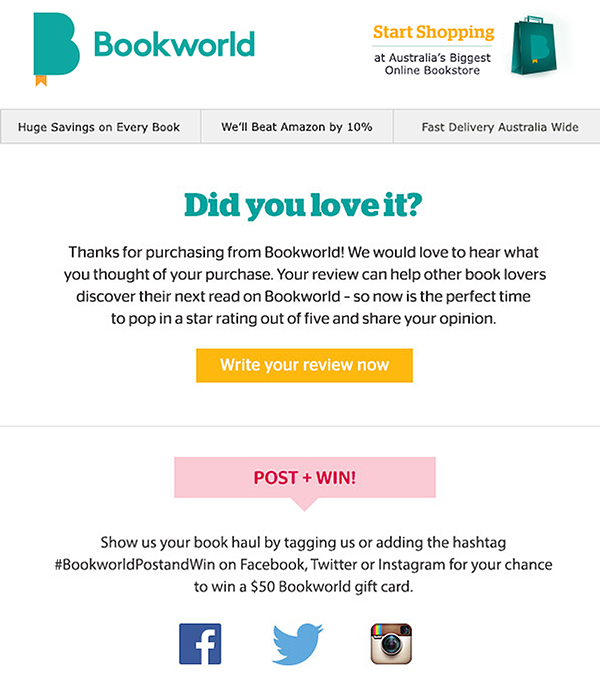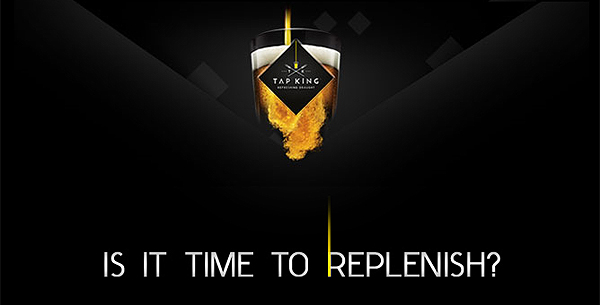
How do you transform disparate interactions with your brand into a more cohesive customer experience?
That’s the question we sought to answer at Customer 360 Symposium 2015, along with two very different clients. A big thank you to Sandy Park (Marketing and Communications Director of Lion) and James Webber (CEO of Bookworld) for co-presenting their insights with us.

Bookworld: From digital disruption to digital customer experience
As the digital phoenix rising from the disrupted Borders brand, Bookworld’s relationship with email became a lot more important. Without physical stores, email has become a key way customers interact with the brand after purchase.
Email as a customer experience tool
When Bookworld approached us to take care of their email, two major priorities became apparent.
First, we had to verify who was still valid to talk to, which involved re-engagement campaigns, technical validation and list warming.
Second, the way email was used would be quite different, since it would act as both the customer service representative and the loyalty program. Subscriber and customer engagement was therefore incredibly important. Igniting that engagement meant building campaigns and triggers that were far more sensitive to a customer’s prior brand interactions and preferences.
We’re proud to say that the approach paid off. Looking at email and revenue data within their analytics data, we increased revenue and traffic from email over 10%.
Bookworld also wanted to prioritise engagement for a better kind of loyalty. They wanted to minimise “prompted” engagement and maximise “spontaneous” loyalty. As a customer, that’s the difference between:
– Buying a book from Bookworld because they’ve sent you an offer.
vs
– Bookworld being your go-to place every time the desire for a book arises.
The Bookworld Citizen Loyalty Programme and the way it was delivered via targeted email became a major part of fostering spontaneous engagement. Rather than using email exclusively for offers, it has become a way for Bookworld to foster an ongoing experience.
Quick wins
An obvious start was to welcome each new subscriber; much like a customer service representative might acknowledge a customer who has walked into a store. Imagine being totally ignored if you said hello to someone behind the counter in store, only to have them later chase you down the street telling you they have a 50% off sale.
Bookworld’s welcome email soon became one of the most opened emails – and it makes sense why. If a customer has just expressed interest in your brand, they’re far more likely to engage when you respond rather than later when they’re busy doing something else. The welcome email then drove further engagement, prompting subscribers to start shopping or join the Citizen programme.
So what happens once a customer has purchased?
They get an immediate thank you and are presented with ways to further their engagement with the brand, via reviews or social.

Bookworld also wanted to drive an emotional connection that would move customers to anticipate communications. Their mystery coupon was a great example of stoking urgency and curiosity.
Of course, not everyone will open and engage with everything, despite your best efforts. That’s why re-engagement campaigns were re-introduced for customers who were consistently not interacting.
For deliverability, it was important to treat dead addresses differently. For optimum customer experience, it was important not to over-email people who were clearly less interested in the brand. To prevent culling subscribers unnecessarily, the campaigns were run at multiple time intervals, with differing offers.

For long-term engagement, Bookworld also made their content far more customer-centric and interactive. Best-seller compilations use social proof to prioritise what’s offered, while Citizens can also vote on which books are discounted by 50% for a special sale. This keeps the email programme conversational and makes the customer feel that Bookworld is “their” brand.
Beyond digital, Bookworld also sought to form a more direct emotional connection in person. Their pop up campaigns and community engagement drew on the brand’s Australian roots, demonstrating their brand value of being Australian owned and operated, with fast shipping as a result.
Lion: Connecting sales, consumer acquisition and engagement
From a broader marketing perspective, Lion recognised that beer was facing a growing relevancy challenge when compared with other beverages.
To address that challenge, Lion have transformed their marketing priority to developing active relationships with their consumers. That means owning their relationship with consumers more directly, and connecting with them directly.
Lion’s vision is to have a relationship with every household and venue by 2025.

Unlike most FMCGs, this vision involves a targeted approach in their “direct to consumer” marketing via email, which makes up a minimum 50% of their target for active relationships. Lion has recognised the importance of email for direct active relationships, with social used more for digital marketing reach.
The prioritisation of direct to consumer marketing is an interesting change in the FMCG world, which has predominantly used above-the-line efforts with the goal of reach and awareness.
Quick wins
Connecting sales promotions with 1-1 marketing
Lion has connected its sales promotions with its 1 to 1 marketing. Promotion entrants have usually purchased something, so Lion utilises that one-off interaction to fuel the next interaction. For example, Lion has triggered replenishment EDMs from a promotion that required purchase. These emails have received engagement rates 4 times industry averages because the targeted consumers had specifically invested in the brand before.
Using postcode data that is collected for prize fulfilment, Lion has triggered localised in-store pricing in emails to drive repeat purchases – which also cements their relationship with their trade customers. Postcode data is also used to target future trade promotions that may be needed at a more localised level.
The value of an owned database in paid reach as well
Of course, Lion hasn’t stopped its advertising efforts, but recognises the value of an owned database in paid reach as well. A clear example is Facebook paid reach. Lion has built up huge followings on Facebook – yet with the death of organic reach, they have to pay to reach consumers who have “liked” them.
Lion cites that there is huge potential for bringing those consumers into the owned database (through Facebook connect for example, which also reduces friction during acquisition), and pull over some consumer data in the process. The second is to utilise owned data to better target paid reach on Facebook, effectively taking back control of the “algorithm” used to define who sees what.

Main takeaways
Going back to the question: how do you transform specific sales and marketing activities into a more cohesive customer experience?
– Use every brand interaction as an opportunity to turn anonymous consumers and customers into active relationships
– Don’t just start relationships – keep them going by ensuring every touch point drives the next interaction
– Define what an active relationship means to your organisation
– Use your existing fan bases and channels, but make them smarter with data
Turning the dream into reality (and results)
Customer Experience often requires massive organisational change. Some brands have already started the journey of change, but in our own world, the agency and vendor space, that change has barely been reflected.
Agencies still sell you an idea and maybe the execution. Vendors still sell you the software. In the process, you rack up some impressions. But as CEO of Klout, Joe Fernandez, said so well: Impressions last for seconds. Relationships last for years.
The time has come to consider a new approach. Internally, we’ve started a new model where clients pay for what matters: the active relationships that will stay with the brand no matter who does your creative and no matter what platform is used to keep in touch.
It’s important to align both client and agency incentives, so that clients can match their marketing budgets to marketing accomplishments. That helps agency teams focus everything they do with what clients actually want to achieve.
If your 1 to 1 engagement is not performance based, it might be worth considering it now.
About Adam Quirk - Managing Director, Traction Digital
Adam is a consistent pioneer in digital, managing teams to create award winning campaigns for global brands like Unilever, Audi, and Diageo. His strength is turning complex organisational objectives into actionable solutions. As Managing Director of Traction Digital, he continues to nurture long term relationships with leading brands, thanks to the excellent results they achieve with his direction.
Linkedin •

